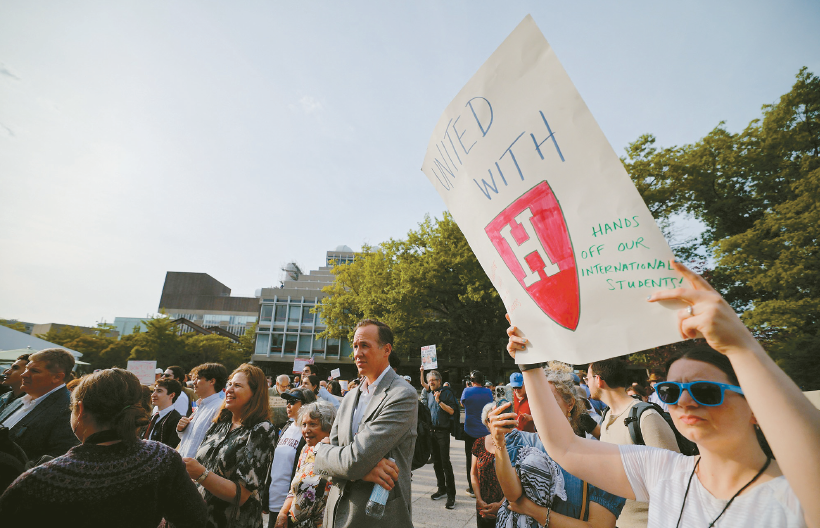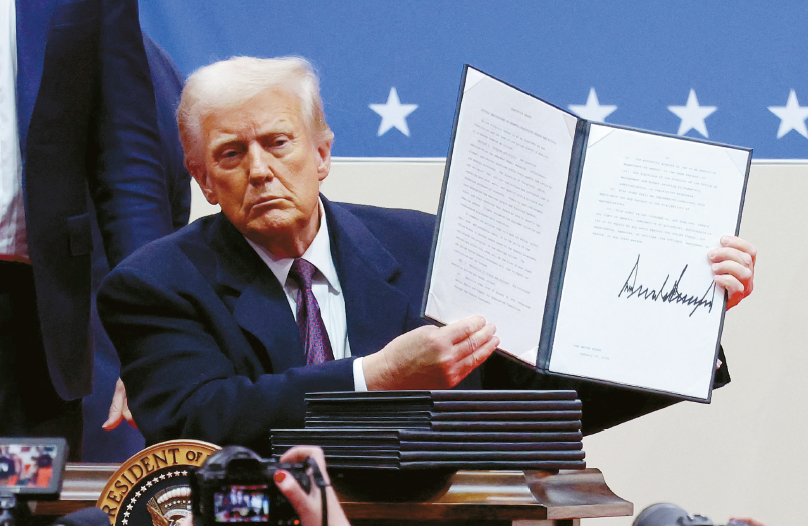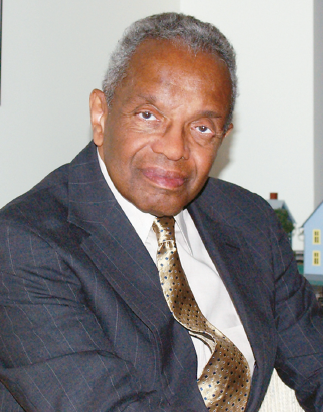These days, American media is filled with the sighs of intellectuals. They lament that freedom of expression has disappeared under the Trump administration.

Take a look at the May 13 column by Joseph Stiglitz, Nobel Prize-winning economist, published in the New York Times. He claimed that one of his international lectures was nearly canceled because of the Trump administration’s abolition of DEI—Diversity, Equity, and Inclusion—policies. The foreign university where he was scheduled to speak hadn’t pledged to reject DEI, so a $10,000 grant from the State Department was canceled. That even the ever-busy State Department would micromanage such things only underscores, in his view, the Trump administration’s pettiness. And there are countless other articles like his.

Trump is suppressing free speech? That’s only half the story.
It’s easy to sigh and wonder: how did the “land of the free” come to this? But if you take it all at face value, you’re only seeing one side. There is another perspective—the conservative side that has been silenced under the weight of the DEI agenda. For them, Stiglitz’s article is just another exaggerated complaint from someone playing the victim after losing power.
The Biden administration made DEI compliance a requirement for receiving federal funding. The Trump administration made DEI abolition a requirement. Same tactic, different direction. It’s not something only one side should be criticized for. And since this is the same Stiglitz who, back in 2007, openly praised Hugo Chávez’s Venezuela, maybe we just let it slide.
The battle over DEI between Republicans and Democrats has gone far beyond a debate over values. On January 20, 2021, Biden’s first day in office, he signed Executive Order 13985, establishing DEI as official policy. Four years later, on the exact same date, Trump signed Executive Order 14151 abolishing it—just to make it clear.
Ira Glasser, 87, a longtime civil rights activist, criticized the whiplash with biting clarity: “Censorship is like poison gas. It seems perfect when sprayed on your enemies, but once the wind changes, it blows back at you.”
So what exactly is DEI, and why is it causing such rupture? It began as a slogan for eliminating discrimination and fostering integration. Over time, and through successive Democratic administrations, it became institutionalized—especially in government and universities. Along the way, its one-sided procedures and ideological bias provoked pushback from conservatives. That’s what led to the Trump administration’s complete repeal. DEI has now become the central front in America’s war over dominance.
There’s also the fact that DEI serves as a kind of political litmus test. Within the DEI camp, if you agree with the issues they consider righteous, you’re on the right side. If not, you’re considered regressive. And those considered regressive are frequently targeted for collective attack. There’s no shortage of cases where people have suffered consequences for simply expressing their opinions on campus.
In 2023, Scott Gerber, a professor at Ohio Northern University, was dragged out of his classroom by security after pointing out the blind spots of DEI.
In 2021, Dorian Abbot at the University of Chicago said that merit should matter more than race in college admissions. His guest lecture was canceled.
In 2020, Leslie Neal-Boylan, the dean of the nursing school at the University of Massachusetts, wrote, “All lives matter,” and was fired. Apparently, only “Black Lives Matter” was acceptable.
DEI does not tolerate diversity of thought.

It is even used as a purge tool in the political world. The recent infighting inside the Democratic Party shows this well. In February, David Hogg, 25, was elected vice-chair of the Democratic National Committee (DNC), stirring controversy with his radical reform proposals. Now the DNC is preparing to nullify his election on the grounds that, as a white man, he violates DEI’s gender quota rules.
One side’s overreach inevitably leads to overcorrection from the other. That’s exactly what Trump’s anti-DEI offensive is. And the place where this clash has become most visible is Harvard.
In April, the Trump administration froze $2.2 billion in federal support to Harvard, stating that it failed to meet DEI rollback standards. Harvard filed a lawsuit in protest. Then on May 21, the government went even further—revoking Harvard’s authority to enroll international students.
Signs that Harvard would become the central battlefield had been present for two years already. In 2023, the Supreme Court ruled that Harvard’s race-based admissions system—which granted preference to minorities—was unconstitutional. The DEI camp pushed back hard. That October, anti-Israel protests erupted on campus in the wake of the Israel–Hamas war. Protesters called Israel’s war an extension of racial oppression. Despite racially charged slogans spreading on campus, then-President Claudine Gay responded with a vague, tepid statement—fueling further outrage from conservatives.
Historically, Harvard has been the birthplace of DEI theory. The concept of “diversity,” the very core of DEI, gained momentum following a remark by sociology professor Charles Willie (1927–2022). In 1987, he told a Christian Science Monitor reporter, “If you want laws that benefit everyone, you have to diversify the people making them.” In other words: don’t let white people monopolize power—open it to Black Americans too. A college classmate of Martin Luther King Jr., Willie especially emphasized racial justice. He even argued that diversity should come before liberty. That moment marked the beginning of “diversity” becoming a politically charged and activist term.

The one who pushed it further was Derrick Bell (1930–2011), the first Black tenured professor at Harvard Law School. In 1989, he helped lead the development of Critical Race Theory (CRT), fusing race with Marxism. He argued that America was structured as a racial hierarchy dominated by white people—and that this structure had to be dismantled. He played a pivotal role in expanding DEI into a more radical racial movement.
Yet if you take a clear-eyed look at DEI today, the holes are obvious. The logic begins with race—and is, therefore, racialist at its core. It divides people into categories—white, Black, Hispanic, Asian—and insists that each should be treated in proportion to their population. If Black Americans are 14.4% of the population, then professors, students, public officials, and corporate executives should reflect that proportion. Any underrepresentation is labeled discrimination.
But the same logic is not applied equally. Black inmates make up 36% of the prison population, so the solution is to overhaul the entire criminal justice system. But when it comes to the racial makeup of professional basketball—where Black athletes dominate—no one says a word.
Chopping people into one racial category or another is also absurd. In 1997, when Oprah Winfrey asked golfer Tiger Woods what race he was, he gave the perfect answer: “Cablinasian.” A mix of Caucasian, Black, Indian, and Asian. According to the Pew Research Center, since the late 2010s, one in every seven newborns in the U.S. has parents of different races. So what race should they be? And how should they be counted? DEI and CRT offer no answer.
Even someone who looks like a classic blonde white American can fall into a gray area. Senator Elizabeth Warren is a prime example. In 1998, Harvard listed her as its “only Native American tenured minority female professor.” She was later accused of faking that background to receive minority benefits. A DNA test revealed that she may be anywhere from 1/32 to 1/1024 Native American. Faint, but not entirely false. During the 2018 Democratic primaries, Trump mocked her as “My Little Pocahontas.”
Harvard, the Incubator of Power and Public Opinion
Over time, DEI became like a solar panel—absorbing and concentrating the energy of partisan politics. As a result, DEI grew into something like a monopoly operated by the American left. According to the Center for Renewing America, during Biden’s presidency, 24 federal agencies ran 460 DEI programs, spending a total of $1.12 trillion. All of it taxpayer money.
The paradox is that DEI promotes inclusion while practicing exclusion. Its ideological foundation is built on “repressive tolerance,” a term coined by Herbert Marcuse, the spiritual figurehead of the 1960s–70s American left. “True equality,” he said, “requires suppressing reactionary speech. If you tolerate all speech equally, you only entrench inequality.” That’s where cancel culture comes from—say the wrong thing, and you’re publicly dragged. Conservatives have come to despise this hypocrisy. And the Trump administration is now zeroing in on it as a major target.
So why have university campuses like Harvard become the front lines in the DEI war?
To borrow a phrase from Italian communist theorist Antonio Gramsci (1891–1937), they are ideal terrain for a “war of position.” Tenured professors stay in place, while students rotate in and out every year. Education, research, writing, and lectures all serve as effective tools for spreading ideology. It’s a near-perfect stage for building and maintaining ideological hegemony.
And among them all, Harvard stands out. It doesn’t just operate as a university—it functions as an incubator of power and public opinion. After studying there in 2023, former Korean Minister Young-Sun Park said, “I could feel the power of America.” Today, Harvard is a base the left can’t afford to lose—and a high ground the right is determined to take.
BY YOONHO NAHM [yhnam@koreadaily.com]




